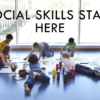How to Create the Ultimate Playroom: A Parent’s Guide
Designing the perfect playroom can be an exciting project for parents and a dream come true for children. A well-organized playroom offers a space where kids can unleash their creativity, engage in meaningful play, and develop critical skills, all in a fun environment. In this blog, we’ll guide you through the process of creating the ultimate playroom that promotes learning, safety, and endless entertainment.
Step 1: Choose the Right Space
The first step in creating a great playroom is selecting the right area in your home. Ideally, the playroom should be in a space that is:
- Well-Lit: Natural lighting is ideal for boosting mood and energy levels. Choose a room with large windows, if possible.
- Spacious: Ensure there is enough room for your child to move around freely and engage in different activities like building, running, or crafting.
- Quiet and Safe: The playroom should be away from high-traffic areas of the house, providing a peaceful space where children can focus on play without distractions.
Step 2: Organize by Play Zones
To keep the playroom functional and tidy, divide the space into different play zones, each dedicated to specific types of play. Here are some zone ideas:
- Building Zone: Set up a table or floor space for building blocks, construction sets, or other hands-on activities that require focus and creativity.
- Reading Nook: Create a cozy reading corner with a bookshelf stocked with age-appropriate books, bean bags, or comfortable cushions.
- Art and Craft Zone: Equip this area with an easel, coloring materials, paper, glue, and other crafting supplies to inspire creativity.
- Pretend Play Area: A small play kitchen, doctor’s kit, or dress-up costumes can help children explore their imagination and role-play.
Step 3: Prioritize Storage Solutions
Keeping the playroom organized is key to ensuring that it remains a stress-free, creative space. Invest in storage solutions that make tidying up easy and fun for kids:
- Open Shelves: Place toys on low, open shelves so kids can easily access them and learn to put them back on their own.
- Storage Bins: Colourful bins or baskets can be labelled for different types of toys, like building blocks, art supplies, or puzzles.
- Toy Chest: A sturdy toy chest is perfect for large items and can double as a seating area.
Step 4: Add Educational Toys
To make the playroom a space for learning as well as fun, add toys that promote cognitive development and creativity:
- STEM Toys: Include building sets, science kits, or puzzles that challenge children to think critically and problem-solve.
- Musical Instruments: Simple instruments like tambourines, xylophones, or a toy piano encourage creativity and can develop a child’s sense of rhythm.
- Interactive Learning Tools: Toys that teach letters, numbers, or shapes, such as interactive boards or games, can enhance early learning.
Step 5: Decorate for Fun and Inspiration
The playroom’s decor should inspire joy and creativity. Consider these decoration tips:
- Bright Colors: Use cheerful colors on walls, rugs, and furniture to create an inviting atmosphere.
- Personalized Decor: Incorporate your child’s favorite themes or characters into the design to make the space feel special to them.
- Art Display: Dedicate a wall or bulletin board to showcase your child’s artwork, giving them a sense of pride in their creativity.
By following these steps, you can create the ultimate playroom that will grow with your child, encouraging them to learn, explore, and play in a safe, inspiring environment. At Kidankam, we offer a variety of toys and educational tools that will complement any playroom design.








Add comment